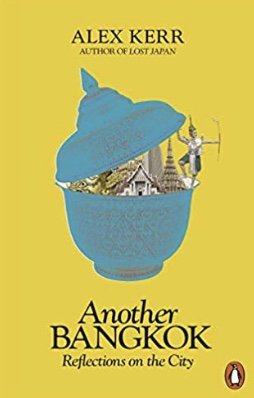Bangkok Shophouses by Louis Sketcher
There are travelers who are perfectly satisfied with big fat guidebooks that tell them exactly where to go, where to eat, where to sleep, and where they will always be securely in the company of other travelers. This book is not for them. Bangkok Shophouses is slender, idiosyncratic, and fits on a coffee table as nicely as it does within a backpack. It’s a book for people who want to wander through the older streets of Thailand’s capital city, while being given an understanding of what they’re looking at. Since these are the sort of people who like to roam around on their own, unhindered by a guide or a big fat guidebook, Louis Sketcher, aka Suppachai Vongnoppadongdacha, is the man for them.
“Because each shophouse has a story to tell…” he has taken his sketchbook, pencils, brushes, and watercolors to two of Bangkok’s oldest neighborhoods. The first is an area that almost every traveler will have on their itineraries, the historic area of Phra Nakhon that holds the Grand Palace, the city’s most revered temples, and the raucous jollity of that tourist paradise, Khao San Road. The second is less renowned, Thonburi, the Brooklyn of Bangkok, that lies across the river and has just recently attracted the attention of developers.
Both of these areas are filled with streets that hold architectural gems and other secrets, which are beautifully divulged in this book.
Sketcher’s drawings are delicate and bright with soft colors and meticulous details. He shows the carvings and elaborate sculpted designs on pediments and balustrades, the lattice work on veranda railings, the creative use of stucco and concrete. He identifies the styles of architecture and the reign in which the buildings were constructed. Strolling through the labyrinth of streets, he finds the diversity that exists in this part of the city--the Indian section, the lane that has been the Chinese trading center from the earliest days of Bangkok, and Talat Noi, a thriving urban village which has housed Chinese, Portuguese, and Vietnamese throughout its history. He shows where to find the three shophouses that contain Bobae Market, a wholesale clothing market that’s been bustling since before World War Two began. His drawings reveal the shuttered Palladian windows that lie above Pak Klong Talad, Thailand’s biggest flower market. And he tackles the overwhelming drama that’s found in Yaowarat, Bangkok’s sprawling Chinatown, plunging beneath its neon glory to point out quieter beauties, including an elegant colonial-style gem that’s been refashioned into a hotel.
Across the Chao Phraya river, Sketcher goes to a wooden house with an ornately peaked roof and latticed walls that’s now a riverbank cafe and to a shophouse with a concrete facade that looks like a giant honeycomb, within a corner of the city that’s famous for its desserts. In the neighborhood known as Kudi Chin which was once Portuguese, he finds Windsor House, owned by an English family long ago, a wooden house in the style known as gingerbread with a profusion of carved ornaments and “exquisite wooden fretworks above the windows, eaves, and canopy.” And he shows all the reasons why readers should brave the “long and narrow lane” that twists through the riverside Wang Lang Market.
The primary delight of this book lies in the illustrations that are scattered in the margins--sketches of the people who live and work in these shophouses, the food that can be found and eaten there, the treasures that are sold within their walls. A double-page spread of delectable specialties and where to find them, along with an index of some of the shophouses with addresses in English and in Thai, add to the usefulness of this information. Yes, you can stay in the baroque splendor of the heritage hotel, buy sarees in a 100-year-old shophouse in the Indian section of Phahurat, view the river traffic in all its chaotic splendor from the comfort of a cafe in the Wang Lang Market.
Because the text is bilingual, readers have a good chance of finding everything that’s pictured—and because there’s an illustrated list of shophouse styles and examples of architectural vocabulary, they’ll be able to understand what they see. Just in case they might want to fill their own sketchbooks, there’s a list of supplies and paints that were used in making Sketcher’s drawings. A small bibliography may not be helpful to everyone since it’s largely written in Thai.
I lived in Bangkok for eight years and have lost count of how many times I’ve visited Thailand. Bangkok Shophouses has made me realize how much I missed as I walked and stared through the areas that Louis Sketcher has illuminated. I can’t wait to go back--and when I do, this book is going with me, every step of the way.~Janet Brown












